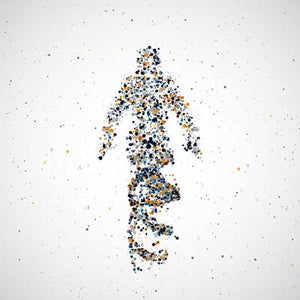Was the Human Genome Project a Success?
October 12, 2015

In 2000, President Bill Clinton announced that the first draft of The Human Genome Project was finalized, and the findings were going to “revolutionize the diagnosis, prevention and treatment of most, if not all, diseases.” The Human Genome Project was an international, collaborative research program whose goal was to identify, or sequence, the genetic blueprint, of human beings, understand the genetic roots of common diseases and seek treatment.
While the original goal was to sequence all three billion chemical units in the human instruction set, mapping the entire genome was far too costly for the technology available in 1989 – so an innovative workaround was devised: Instead of sequencing the entire genome, the project would focus on areas within the genome where humans have divergent DNA. The theory being that by spotting variations in specific areas of the genome, and correlating them with major diseases, it would be possible to isolate the genetic fingerprint of certain illnesses.
Unfortunately, this approach was not as successful as hoped. Some diseases we isolated this way, but only a small fraction of them. It turns out that many of the illnesses that were being sought out were related to a large number of variants, and the data wasn’t there to provide the statistical significance needed.
Did this mean that the project wasn’t successful? Not necessarily. Since that time, gene sequencing costs have fallen so this approach would be feasible in the future, and the project did provide direction for the next phase of research. We may be still years away from discovering what causes common diseases and finding appropriate treatments but what we do have is the human framework. If we didn’t know the genetic sequencing, this wouldn’t be possible. Meanwhile, the project may have transformed the biological sciences, which has led to other initiatives.
The Human Microbiome Project
One of those initiatives is the Human Microbiome Project (HMP) sponsored by the National Human Genome Research Institute. It was a conceptual extension of the Human Genome Project. It began in 2008 to study the human as a “superorganism” composed of non-human and human cells. One of its major roles was to map the human microbiome and its role in human health and disease. Over a period of 5-years, the Human Microbiome Project studied 300 healthy individuals, both male and female. One of the first surprises from this study was that there may over 8 million unique microbial genes associated with the microbiomes across the human body compared to the total number of genes. What this says is that the genetic contribution of the microbiome to the human superorganism may be many hundreds of times greater than the genetic contribution from the human genome.
What is the human microbiome and why is it so important?
The human microbiome is the genetic material of every microbe – bacteria, fungi, protozoa and viruses – that lives in and on the human body and it is critical for our human health. Our bodies are a very complex ecosystem and for every one human gene we have, there are 100 associated genes within our microbiome. More than 100 trillion microorganisms live in our mouth, skin and other mucosal surfaces of our bodies but the vast majority of them live in our gut, primarily our large intestine. These microbes have numerous beneficial functions such as digesting food, preventing disease-causing pathogens from invading the body, and synthesizing essential nutrients and vitamins. When there is dysfunction in the microbiome, unhealthy microbes accumulate which result in abnormal immune responses. In other words, we get sick.
The Unique Microbial Footprint
Interestingly, the microbiome was not recognized to exist untill the late 1990s. Since then, researchers mapping the human microbiome are discovering how a person’s microbiome may influence their vulnerability and weaken the immune system as well as leave them susceptible to disease. Research also shows our microbiome is unique to us. Even twins have different microbiomes. According to a related study, human genetics may not even play a major role in dictating microbiome composition.
It’s interesting to see the similarities between the two projects and certainly advancements are being made in both areas that will eventually lead to new treatments and therapies. We’re especially excited to see so much advancement being made in the study of the microbiome the “second genome”, as it relates to what we’ve been saying for quite some time.
The post Was the Human Genome Project a Success? appeared first on Natren Probiotics Blog.





Leave a comment